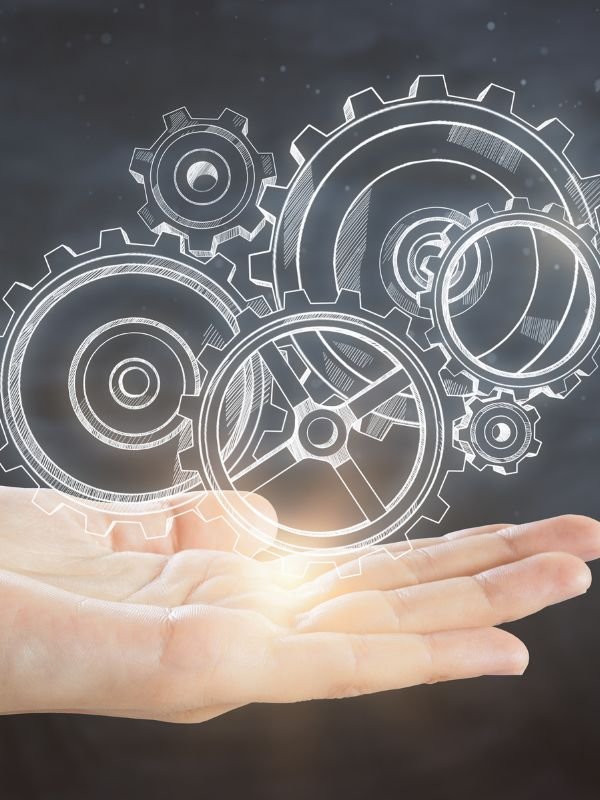Empowering businesses with advanced mechanical design solutions
We empower businesses with advanced mechanical design solutions.
About Us
What Distinguishes us as Your Ideal Engineering Partner
We are a dedicated team of mechanical engineering professionals driven by innovation and passion for designing top-notch solutions that meet the diverse needs of industries across the globe. Based in India, we leverage our collective expertise to deliver precise, efficient, and cost-effective engineering design services.

Our Services
We Are Your Partner in Precision Design and Engineering
Mechanical Product Design
- Concept Development: We work with you to understand your needs and develop innovative solutions.
- Design & Engineering: We create detailed designs, perform simulations, and optimize performance.
- Prototyping & Testing: We build prototypes and conduct testing to validate design concepts.
- Manufacturing & Production: We assist you with manufacturing and production processes, ensuring quality and efficiency.

Lalit Rawat
Designer / Mech. Engg

We Work For
Industries We Served

"The Cadify Studio team took our rough concept and transformed it into a highly detailed CAD model. They provided insights that even helped us improve our design. Their level of detail and dedication truly exceeded our expectations!"
Frequently Asked Questions
Q1. What is CAD, and why is it important in product design?
Ans. CAD (Computer-Aided Design) is essential for creating precise 2D and 3D product models. It’s widely used in industries like automotive, aerospace, and manufacturing for better accuracy, faster iterations, and reduced errors. CAD software tools allow for innovation, product visualization, and cost-effective design solutions. It is used to create, analyze, or change two- or three-dimensional designs and models in a digital environment rather than using manual drafting methods.
Q2. What is 3D rendering, and why is it important for engineering?
Ans: 3D rendering services transform CAD models into photorealistic visuals or animations for marketing, product presentations, and design validation. By visualizing the final product, it helps manufacturers and engineers communicate better with stakeholders, ensuring better customer satisfaction and reduced design errors. Rendering is the process of converting a 3D geometry into a 2D image.
Q3. How do CAE simulations benefit product development?
Ans: CAE simulations such as FEA (Finite Element Analysis) and CFD (Computational Fluid Dynamics) reduce physical prototyping by virtually testing product designs under real-world conditions like stress, heat, and vibration. This process enhances design optimization, ensures compliance with industry standards, and shortens the product development cycle. They also help lead and create the design rather than simply verify and validate designs created by a person.
Q4. Which industries benefit most from CAD and CAE services?
Ans: Industries like automotive, aerospace, consumer electronics, healthcare, and manufacturing rely heavily on CAD and CAE services. These services optimize product designs, ensure compliance with engineering standards, and improve efficiency in prototype development and production. Automotive, aerospace, manufacturing, civil engineering, electronics, and healthcare are key beneficiaries.
Q5. What is reverse engineering, and how does it help manufacturers?
Ans. Reverse engineering services analyze an existing product to recreate or improve its design. It’s particularly useful for updating obsolete components, improving product performance, and ensuring compatibility with modern manufacturing processes. This service is the process of analyzing a product, device, or system to understand its design, construction, or functionality, making it essential for industries like automotive, industrial machinery, and aerospace.
Q6. What is the difference between CAD and CAE services?
Ans. CAD services focus on drafting and designing 2D/3D models, while CAE (Computer-Aided Engineering) services provide simulation analysis like structural, thermal, and fluid dynamics. Together, they ensure a product is optimized for both performance and manufacturability, widely demanded in engineering and manufacturing industries. CAD is for designing a product, and CAE is for testing and simulating it.
Q7. Why is technical documentation critical for manufacturing companies?
Ans: Technical documentation services, including BOMs (Bill of Materials) and user manuals, ensure clear communication of design specifications and manufacturing requirements. It reduces production errors, enhances operational efficiency, and ensures compliance with international industry standards. Technical documentation captures everything that makes a product from a technical perspective, from design to operation.
Q8. What are the benefits of outsourcing CAD and CAE services?
Ans: Outsourcing CAD and CAE engineering services saves costs, reduces project timelines, and provides access to cutting-edge tools (industry-used). By partnering with experts, businesses can focus on core operations while ensuring high-quality, optimized product designs. Cost savings is one of the primary benefits, as outsourcing reduces the need for in-house resources and infrastructure.
Q9. What is Finite Element Analysis (FEA), and how is it used in engineering?
Ans: FEA (Finite Element Analysis) is a simulation tool used to analyze and optimize designs for stress, thermal performance, and structural integrity. Engineers use FEA to predict how a product will perform under real-world conditions, making it indispensable for mechanical design services and ensuring product safety and durability. Finite Element Analysis (FEA) is a computer-aided engineering (CAE) tool that uses mathematical models to predict how a product will behave in real-world conditions.
Q10. How do eco-friendly designs impact manufacturing and the environment?
Ans: Sustainable and eco-friendly product designs reduce waste, optimize material usage, and lower carbon footprints. Using recyclable and biodegradable materials helps manufacturers comply with global green standards while boosting brand reputation and reducing production costs. Reducing environmental impact, conserving resources, promoting sustainability, and driving innovation are the primary benefits of eco-friendly designs.
